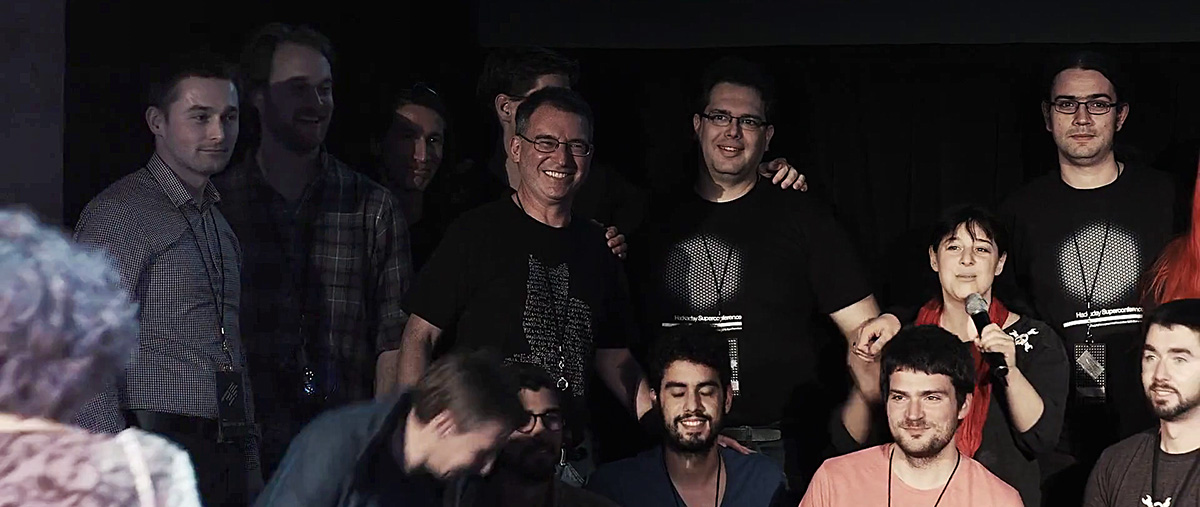
The uRADMonitor model D, or the Portable Environmental Monitor, has entered this year’s Hackaday Prize competition, throwing in a complex hardware design, backed by a matching software infrastructure implemented with thousands of lines of code. What started with a simple hand drawn diagram was followed later by the Beta prototype and finally led to the production unit but not without a very intense creative process, done under a lot of pressure:

The uRADMonitor is a global network of interconnected hardware devices that work as detectors for various chemical or physical pollutants impacting human health. The current detectors can measure air temperature, barometric pressure, humidity, dust concentration, VOC but also Alpha, Beta and Gamma radiation. The latest uRADMonitor model D, uses the BME680 sensor from Bosch to assert air quality. This is an ambitious project that didn’t get intimidated by the difficulty of a global scale solution implementation. In the end, there’s an important goal that keeps it in motion, and that goal is to improve the life of all people on Earth, by increasing the quality of our environment, in homes, work offices or whole cities.
The winners of the 2015 prize awards were to be announced at the Hackaday Superconference which was held in San Francisco, last weekend. I got there on Friday, after a long flight from Budapest. It was absolutelly thrilling to meet all the great people behind the Hackaday articles. I remembered the excitement of having my first project featured on their website. Surely I didn’t forget to take photos with everyone and I also made new friends among the fine people attending the conference, which was a successful event:

The motivation to take part in the Hackaday Prize was to solve a problem a large number of people is facing. uRADMonitor helps by identifying pollution with its array of network connected detectors spread all across the Globe. But to achieve that, progress had to be made to add more features to the new hardware units: portability in terms of a rechargeable lithium battery, a power management system to charge the battery but also invert its voltage to system needs, a separate 500 volt inverter for the Geiger tube, a dust sensor, a Geiger tube and air quality sensors all packed in so little space, wireless connectivity successfully talking with the central server in real time, which required a predefined protocol and more complexity on the software side since it also includes encryption for data security, and finally drivers and real time functionality in software to handle the sensors with good accuracy. All this, almost doubled by server side software, handling big data on the back end, and dynamic charts on the front end, to deliver informative environmental updates for a real time user experience, despite the complexity of the entire system.

The challenges were endless, given the ambitious size of this project: research in sensor physics, design hardware units from scratch, put them into production, develop a robust firmware code (3000 lines of code and counting), configure and develop server side software, capable of supporting big data. Seeing this list of words I can’t believe how simple it sounds, remembering all the challenges along the road: for instance, to meet the Best Product deadline of the Hackaday Competition, I was still uploading code on the three demo units to be shipped, while the shipping company was already knocking on my door, to pickup the package, all this after a few sleepless nights. Also various hidden bugs, both in hardware and software, part of any development process and these were also time consuming. Speaking about time that is a total of almost half a year of continuous work and even more of background research. This came at a cost which sometimes I find too big: working continuously instead of having walks with my daughter and wife, going to sleep only to wake up working again in the morning, not seeing summer’s warm sun as by the time the project was complete it was almost winter. But there is a cost to pay for each endeavour.

A very long chapter is ending, all is now fixed and developed properly, and the final product is finally here, not only ready for production including enclosure design, pcb and assembly, testing, accessories, packaging and shipping, but already deployed worldwide. For a one man, this was a lot to do.

The Hackaday Prize was a fierce competition and uRADMonitor was among the few titles that already had a presence on the market, proving its matureness as an additional one step further over the already complex hardware and software, an important thing in developing a “best product”, an attribute that uRADMonitor project earned not by a title or prize, but the hard way.
I need help to get genuine new SBM-20 GM Tubes for education in India. Can you help. I have low budget of under US$10/ each GM tube and need about 100 GM Tubes for each training class. I run 4 such classes per year. You can find me here or you can google my name.
Dr. Shyam Sunder Tiwari
Shyam, it appears your company is building “Environmental Safety and Radiation Emergency Sensor” . This is what you are needing the tubes for?
Yes, I think SI-29BG is a good GM Tube and if it is available for about $10/each in 100 quantity then I want to try these.
I am also procuring LND-712 and LND-713 at special price from USA. I am basically University Education and training and you may know about me on Linkedin here. https://www.linkedin.com/in/shyam-sunder-tiwari-623a719
Shyam